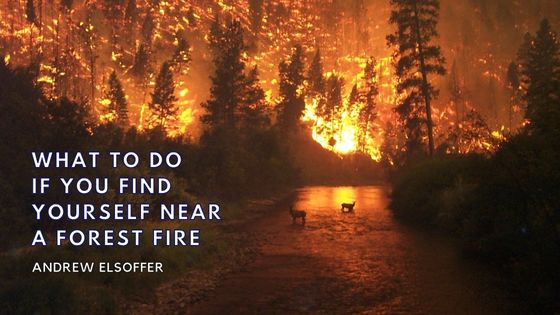Forest fires, while natural in some ecosystems, can be catastrophic events, mainly in areas densely populated with vegetation, wildlife, or humans. The speed and unpredictability with which they spread make them especially dangerous. Whether ignited by human error, natural causes, or exacerbated by changing climate conditions, forest fires are powerful, destructive forces that require immediate response and safety measures.
Assess and Act Quickly
The unpredictability of forest fires necessitates swift and decisive action. If you spot a fire, immediately gauge its distance and direction relative to your position. If the fire is far and not heading towards you, prioritize evacuating the area and alerting authorities. If the fire is rapidly approaching, your safety comes first; material belongings can be replaced, but lives cannot. Do not wait for an evacuation order if you feel threatened. Fires can move faster than humans, mainly when fueled by strong winds or dense vegetation. Early detection and quick response can be the difference between safety and catastrophe.
Choose a Safe Evacuation Route
Identifying a safe path from the fire is crucial. Avoid routes that take you uphill or through dense vegetation, as these areas can accelerate the fire’s speed. Instead, try to move downhill and upwind from the fire, as this is generally the opposite direction from which it will spread. If you’re driving, keep windows and vents closed to prevent smoke inhalation, and drive cautiously. Visibility can be compromised by smoke and airborne debris. If a route is blocked, seek alternative paths and always have a backup plan in mind. If escape seems impossible, look for a body of water like a pond or river to take shelter or find a cleared area away from vegetation.
Protect Yourself from Smoke
Smoke inhalation can be as deadly as the flames. Dense smoke from forest fires contains harmful particles that can damage your lungs and reduce oxygen levels. If caught near a fire, use a cloth (preferably wet) to cover your nose and mouth. This acts as a barrier, filtering out some of the larger particles. Stay as low to the ground as smoke and hot gases rise. If you’re trapped in a vehicle, keep windows up and vents and air conditioning off to prevent smoke from entering. Ensure you have good ventilation if you’re taking shelter in a building.
Being near a forest fire is an undeniably harrowing experience, requiring calm and decisive action. The unpredictable nature of these blazes means every second counts. Preparation, awareness, and quick response can be the pillars of survival. Always prioritize life over possessions and heed the advice of safety officials and authorities. If in a vulnerable area, consider having an emergency kit ready and a plan of action familiar to all family members. While nature’s fury can be overwhelming, human resilience, preparedness, and community support often shine brightest in these trying times. Remember, the primary goal is safety; everything else can be rebuilt or replaced.

